IF vital sign changes in the average healthy adult
symptoms, causes and treatment
IF body temperature going down
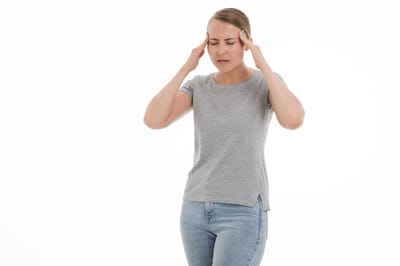

Hypothermia is an abnormally low body temperature. Normal body temperature should be somewhere close to 98.6° F. Hypothermia occurs when body temperature drops to 95 °F. It is the result of the body losing heat faster than it can make it.
Hypothermia is dangerous because it causes vital organs to stop working the way they should. It can lead to heart attack, kidney failure, and liver damage. It also affects the brain making it difficult to think clearly and move. As a result, someone suffering from hypothermia may not realize it. They may even engage in irrational or risky behaviours, such as removing clothing. If they do understand what’s going on, they may have trouble helping themselves or doing anything about their condition.
symptoms including:
- Clumsiness, fumbling, or lack of coordination
- Confusion and memory loss
- Drowsiness, exhaustion, and loss of consciousness
- Pale skin and cold hands and feet
- Slurred speech
- Shallow breathing and weak pulse
- Shivering
While you are waiting for help, take the following first aid steps for hypothermia:
- Move the person inside, somewhere warm, or to a shelter of any kind out of the wind. If you must remain outside or in a shelter, insulate the person from the ground with anything you can layer under them.
- Remove wet clothing as gently as possible.
- Cover the person with anything available, such as a dry sheet or jacket. Ideally, an electric blanket is the best option. Hot water bottles and chemical heat packs will also work. Just be sure to put something, such as a towel or shirt, between these heat sources and their skin to protect it. If nothing else is available, use skin-to-skin contact with a warm body.
- Concentrate on warming the head, neck and trunk of the body gradually. Warming or rubbing the limbs before the core is warm can add further stress to the heart and lungs.
- Help conscious people drink warm, and ideally sweet, liquids without caffeine or alcohol.
- Check unconscious people for signs of life including breathing and heartbeat. If these signs are absent, begin CPR (cardiopulmonary resuscitation).
Frostbite is another type of cold injury that can happen with hypothermia. It is the result of cold freezing a body part. The frozen body part becomes numb and loses . It most commonly affects the ears, nose, cheeks, fingers and toes. It can lead to permanent damage and even amputation.
Early signs of frostbite danger include pain and redness of the skin. Signs and symptoms of frostbite include:
- Firm or waxy skin
- Numbnesscolor
- White, grayish or yellowish skin
This can happen quickly in very cold temperatures. It can also happen with prolonged exposure to cool or cold temperatures as the body uses up all its stored energy.
Hypothermia happens when your body loses heat more quickly than it can make it. The body can lose heat in four ways:
- Conduction: The body transfers heat to matter. Conduction can happen when you lay on the ground. Your body will transfer heat to the earth. Conduction happens faster in water, which conducts heat 25 times faster than air. Moisture and wetness speed up the conduction process and causes hypothermia more quickly.
- Convection: The body loses heat to passing molecules. Wind is the main convection risk in hypothermia. Moving air will draw heat away from the body faster than calm air. This is why wind chills feel colder than the actual air temperature.
- Evaporation: The body loses heat when liquid converts to gas. Your body’s normal way of cooling itself involves evaporation of sweat, which cools the skin. In cold or cool environments, sweat evaporation will increase heat loss. Sweating can also lead to dehydration, which contributes to hypothermia.
- Radiation: The body loses heat to the environment. This is basic body heat loss to air that is colder than your body temperature. The greater the difference between your body temperature and the air temperature, the faster the loss occurs. Having exposed skin will also increase the rate of heat loss.
Babies and older people are especially susceptible to hypothermia. Other risk factors include:
- Alcohol and drug use, which can make you feel warm when you are in fact losing body heat
- Certain medications, such as antidepressants and sedatives, which can interfere with your body’s temperature regulation
- Fatigue
- Medical conditions, such as hypothyroidism, diabetes, and nervous system diseases and injuries
- Mental health problems and dementia
The main goal of hypothermia treatment is to return the body to a normal temperature. This should be done carefully to avoid further injury, and extreme heat should be avoided. You can perform some treatments as part of first aid, but certain treatments require professional medical equipment and trained personnel, such as emergency medical technicians, nurses, and doctors.
Common treatments for hypothermia include:
- Moving the person out of the cold
- Placing warm saline in the stomach, colon or bladder
- Providing cardiopulmonary resuscitation (CPR) if necessary
- Providing warm intravenous fluids
- Providing warm, humidified oxygen through a facemask or nasal tube
- Providing warm, nonalcoholic beverages if the person is awake and alert
- Removing wet clothing
- Using skin-to-skin contact to warm the person
- Warming the blood if equipment is available
- Warming the torso, neck, head and groin first
- Wrapping the victim in an electric blanket if possible
You can take steps to protect yourself and prevent hypothermia including:
- Adequately heat your home during cold weather
- Avoid overexertion in cold weather, which can result in sweating and wet clothing
- Change out of wet clothing, including gloves, mittens, hats and socks, as soon as possible
- Cover your skin including your hands and head
body temperature rises
When your temperature climbs too high and threatens your health, it’s known as hyperthermia.
Hyperthermia is actually an umbrella term. It refers to several conditions that can occur when your body’s heat-regulation system can’t handle the heat in your environment.
You’re said to have severe hyperthermia if your body temperature is above 104°F (40°C). By comparison, a body temperature of 95°F (35°C) or lower is considered hypothermic. The average body temperature is 98.6°F (37°C).
Stages of hyperthermia
Hyperthermia comes in many stages. Heat exhaustion, for example, is a common condition. But others, such as heat syncope, may be less familiar to you. The following is a list of hyperthermic conditions and other heat-related illnesses.Heat stress
If your body temperature starts to climb and you’re unable to cool yourself through sweating, you’re experiencing heat stress. Heat stress can lead to serious complications, such as heat exhaustion and heat stroke.In addition to feeling uncomfortably hot, you may also experience:
- dizziness
- weakness
- nausea
- thirst
- headache
If your symptoms worsen, seek medical attention.
Heat fatigue
If long hours in high heat are causing you physical discomfort and psychological stress, you may be dealing with heat fatigue. People who aren’t used to extremely hot weather or hot working conditions are especially vulnerable to heat fatigue.In addition to simply feeling hot, thirsty, and tired, you may have difficulty concentrating on your work. You may even lose coordination.
If you notice a strain on your physical and mental well-being, get out of the heat and cool down with fluids.
Slowly adjusting to working or exercising in a hot environment can help prevent future heat fatigue.
Heat syncope
Syncope, also known as fainting, occurs when your blood pressure drops and blood flow to the brain is temporarily reduced.It tends to happen if you’ve been exerting yourself in a hot environment. If you take a beta-blocker to lower your blood pressure, you’re at greater risk for heat syncope.
Fainting is often preceded by dizziness or light headedness. You may feel close to fainting, but if you relax and cool down quickly, you may prevent actually losing consciousness. Putting your legs up can help.
As with other heat-related illnesses, rehydrating is key. Any fluid will do, but water or electrolyte-filled sports drinks are best.
Learn more: What to expect during and after a syncopal episode »
Heat cramps
Heat cramps usually follow intense exertion or exercise in the heat. They’re usually the result of an electrolyte imbalance and are typically felt in the abdomen, leg, or arm muscles.To help relieve heat cramps, rest in a cool place, and be sure to replenish the fluids and electrolytes that are lost when you sweat.
Heat edema
Heat edema can occur if you stand or sit for a long time in the heat and are not used to being in warmer temperatures. This can cause your hands, lower legs, or ankles to swell.This swelling is from fluid buildup in your extremities. This is possibly related to a response involving the aldosterone-stimulated reabsorption of sodium into the blood through the kidneys.
Usually heat edema spontaneously subsides over time once you become used to the warm environment. Cooling down and putting your feet up will also help, as will staying hydrated with adequate water and electrolyte intake.
Heat rash
Sometimes, being active in the heat for prolonged periods of time can cause red pimple-like bumps to appear on the skin. This usually develops underneath clothing that has become soaked with sweat.Heat rash typically disappears on its own after you cool down or change clothes.
However, infection is possible if the skin isn’t allowed to cool soon after the rash has appeared.
Learn more: Types of heat rash »
Heat exhaustion
This is one of the most serious stages of hyperthermia. Heat exhaustion occurs when your body can’t cool itself any more.In addition to sweating profusely, you may experience:
- dizziness
- weakness
- thirst
- coordination issues
- trouble concentrating
- skin that’s cool and clammy
- rapid pulse
If you don’t feel your symptoms improving, seek immediate medical attention.
Keep reading: Do you have heat stroke or heat exhaustion? Learn the signs »
When immediate medical attention
Hyperthermia’s most serious stage is heat stroke. It can be fatal. Other heat-related illnesses can lead to heat stroke if they aren’t treated effectively and quickly.Heat stroke can occur when your body temperature reaches above 104°F (40°C). Fainting is often the first sign.
Other signs and symptoms include:
- irritability
- confusion
- coordination issues
- flushed skin
- reduced sweating
- weak or rapid pulse
- Try to get to a cool location, preferably one with air conditioning.
- Drink water or electrolyte-filled sports drinks.
- Take a cool bath or shower to help speed up your recovery.
- Place ice bags under your arms and around your groin area.
Who’s at risk for hyperthermia?
People who work in very hot environments or are exposed to high heat during the course of the job are at high risk for hyperthermia.Construction workers, farmers, and others who put in long hours outside in the heat should take precautions against hyperthermia. The same is true for firefighters and people who work around large ovens or in indoor spaces that are poorly air-conditioned.
Certain health conditions can also put you at higher risk for hyperthermia. Certain heart and blood pressure medications, such as diuretics, can reduce your ability to cool down through sweat. If you’re on a low-sodium diet to help manage high blood pressure, you may be quicker to develop hyperthermia.
Children and older adults are at increased risk as well. Many kids play hard in the hot outdoors without taking time to rest, cool off, and stay hydrated. Older adults tend to be less aware of temperatures changes, so they don’t often respond in time if their environment heats up. Older adults who live in a home without fans or air conditioning may also face hyperthermia in extremely hot weather.
What’s the difference between hyperthermia and fever?
Your body’s temperature is regulated by a part of the brain called the hypothalamus. It normally keeps your temperature at around 98.6°F (37°C), with slight variations throughout the day and night.If your body senses an infection of a virus or bacteria, the hypothalamus may reset your body’s “thermostat” to make your body a hotter, less hospitable host for those infectious agents. In this case, fever occurs as part of the immune system reaction. As the infection disappears, your hypothalamus should reset your temperature back to its normal levels.
With hyperthermia from heat stroke, however, the body is responding to changes in your environment. The body’s natural cooling mechanisms, such as sweating, aren’t enough to overcome the heat of your surroundings. Your temperature climbs in response, causing you to experience some of the symptoms previously described.
Some over-the-counter medications, such as acetaminophen (Tylenol), can help bring down a fever. However, they would be ineffective in treating hyperthermia. Only a change in environment, rehydration, and external cooling efforts (such as cool water or ice packs on the skin) can reverse hyperthermia.
How to prevent hyperthermia
The first step in preventing hyperthermia is recognizing the risks in working or playing in extremely hot conditions. Being in the heat means taking the following precautions:- Take cool-down breaks in the shade or in an air-conditioned environment. If you don’t need to be outside in extreme heat, stay indoors.
- Stay well hydrated. Drink water or drinks containing electrolytes, such as Gatorade or Powerade, every 15 to 20 minutes when you’re active in the heat.
- Wear lightweight, light-colored clothing when outdoors.
- If your home isn’t well air-conditioned, consider spending time in an air-conditioned mall, library, or other cool public place during hot spells.
How to Tell When a Fever in Adults Is Serious
- Characteristics
- Types
- When it's serious
- Causes
- Treatments
- When to go to the ER
- Takeaway
In babies and toddlers even a slight fever may be a sign of a serious illness. In adults a fever is not usually serious or life-threatening.
However, sometimes a fever in adults can be a warning signal that something is not right. A high or persistent fever might be a sign of a serious health condition.
What is a fever?
Fever is normally a short-term rise in temperature that helps your body get rid of illness. A fever begins when your immune system makes more white blood cells to fight an infection. The increase in white blood cells triggers your brain to heat your body up.This causes a fever. In response, your body tries to cool itself off by tightening up on blood flow to your skin and contracting muscles. This makes you shiver and may cause muscle aches.
Your normal body temperature ranges from 97°F to 99°F (36.1°C to 37.2°C). You may have a fever if your temperature rises above this.
Types of fevers
Adults typically have a fever if their body temperature increases to 100.4°F (38°C). This is called a low grade fever. A high grade fever happens when your body temperature is 103°F (39.4°C) or above.Most fevers usually go away by themselves after 1 to 3 days. A persistent or recurrent fever may last or keep coming back for up to 14 days.
A fever that lasts longer than normal may be serious even if it is only a slight fever. This is because a recurrent fever might be a sign of a more serious infection or health condition.
Common fever symptoms in adults include:
- sweating
- chills (shivering)
- headaches
- muscle pain
- loss of appetite
- fatigue
- weakness
When is a fever serious?
Call your doctor immediately if you have a high grade fever — when your temperature is 103°F (39.4°C) or higher. Get medical help if you have any kind of fever for more than three days. Let your doctor know if your symptoms get worse or if you have any new symptoms.SERIOUS SYMPTOMSA fever may be a sign of serious illness if you have:Other signs that a fever may be serious are:
- a severe headache
- dizziness
- sensitivity to bright light
- stiff neck or neck pain
- skin rash
- difficulty breathing
- frequent vomiting
- dehydration
- stomach pain
- muscle cramps
- confusion
- seizures
- pain when urinating
- not urinating enough
- passing dark urine
- passing urine that smells bad
Causes of serious fevers
If you have serious fever symptoms, let your doctor know if you have recently traveled to a different country or attended an event that had lot of people. This may help your doctor find out the cause.Common causes of a fever in adults are:
- viral infection (like the flu or a cold)
- bacterial infection
- fungal infection
- food poisoning
- heat exhaustion
- serious sunburn
- inflammation (from conditions like rheumatoid arthritis)
- tumour
- blood clots
Treatments
A fever is not normally harmful on its own. Most fevers go away within a few hours to days as your body defeats an infection.Help yourself feel better with these at-home flu remedies:
- stay hydrated by drinking plenty of fluids, such as:
- water
- juice
- soup
- broth
- eat light foods that are easy on the stomach
- rest
- use a cool compress, like a damp towel
- take a warm sponge bath
- dress in light, comfortable clothing
- turn down the temperature in your room
- ibuprofen (Advil, Motrin)
- acetaminophen (Tylenol)
- naproxen (Aleve, Naprosyn)
- antibiotics
- antivirals
- antifungals
TABLETS -C
CAPSULES
IF BP IS LOW
A blood pressure reading lower than 90 millimeters of mercury (mm Hg) for the top number (systolic) or 60 mm Hg for the bottom number (diastolic) is generally considered low blood pressure.
The causes of low blood pressure can range from dehydration to serious medical disorders. It's important to find out what's causing your low blood pressure so that it can be treated.
Products & Services
- Book: Mayo Clinic 5 Steps to Controlling High Blood Pressure
Symptoms
For some people, low blood pressure signals an underlying problem, especially when it drops suddenly or is accompanied by signs and symptoms such as:
- Dizziness or lightheadedness
- Fainting
- Blurred or fading vision
- Nausea
- Fatigue
- Lack of concentration
Extreme hypotension can result in this life-threatening condition. Signs and symptoms include:
- Confusion, especially in older people
- Cold, clammy, pale skin
- Rapid, shallow breathing
- Weak and rapid pulse
If you have signs or symptoms of shock, seek emergency medical help.
If you have consistently low blood pressure readings but feel fine, your doctor will likely just monitor you during routine exams.
Even occasional dizziness or lightheadedness may be a relatively minor problem — the result of mild dehydration from too much time in the sun or a hot tub, for example. Still, it's important to see your doctor if you have signs or symptoms of low blood pressure because they can point to more-serious problems. It can be helpful to keep a record of your symptoms, when they occur and what you're doing at the time.
Request an Appointment at Mayo Clinic
Causes
Blood pressure is a measurement of the pressure in your arteries during the active and resting phases of each heartbeat.
- Systolic pressure. The top number in a blood pressure reading is the amount of pressure your heart produces when pumping blood through your arteries to the rest of your body.
- Diastolic pressure. The bottom number in a blood pressure reading refers to the amount of pressure in your arteries when your heart is at rest between beats.
Blood pressure varies throughout the day, depending on:
- Body position
- Breathing rhythm
- Stress level
- Physical condition
- Medications you take
- What you eat and drink
- Time of day
Blood pressure: How low can you go?
What's considered low blood pressure for you may be normal for someone else. Most doctors consider blood pressure too low only if it causes symptoms.
Some experts define low blood pressure as readings lower than 90 mm Hg systolic or 60 mm Hg diastolic. If either number is below that, your pressure is lower than normal.
A sudden fall in blood pressure can be dangerous. A change of just 20 mm Hg — a drop from 110 systolic to 90 mm Hg systolic, for example — can cause dizziness and fainting when the brain fails to receive enough blood. And big drops, such as those caused by uncontrolled bleeding, severe infections or allergic reactions, can be life-threatening.
Conditions that can cause low blood pressure
Medical conditions that can cause low blood pressure include:
- Pregnancy. Because the circulatory system expands rapidly during pregnancy, blood pressure is likely to drop. This is normal, and blood pressure usually returns to your pre-pregnancy level after you've given birth.
- Heart problems. Some heart conditions that can lead to low blood pressure include extremely low heart rate (bradycardia), heart valve problems, heart attack and heart failure.
- Endocrine problems. Parathyroid disease, adrenal insufficiency (Addison's disease), low blood sugar (hypoglycemia) and, in some cases, diabetes can trigger low blood pressure.
- Dehydration. When your body loses more water than it takes in, it can cause weakness, dizziness and fatigue. Fever, vomiting, severe diarrhea, overuse of diuretics and strenuous exercise can lead to dehydration.
- Blood loss. Losing a lot of blood, such as from a major injury or internal bleeding, reduces the amount of blood in your body, leading to a severe drop in blood pressure.
- Severe infection (septicemia). When an infection in the body enters the bloodstream, it can lead to a life-threatening drop in blood pressure called septic shock.
- Severe allergic reaction (anaphylaxis). Common triggers of this severe and potentially life-threatening reaction include foods, certain medications, insect venoms and latex. Anaphylaxis can cause breathing problems, hives, itching, a swollen throat and a dangerous drop in blood pressure.
- Lack of nutrients in your diet. A lack of the vitamin B-12, folate and iron can keep your body from producing enough red blood cells (anemia), causing low blood pressure.
Some medications can cause low blood pressure, including:
- Water pills (diuretics), such as furosemide (Lasix) and hydrochlorothiazide (Microzide, others)
- Alpha blockers, such as prazosin (Minipress)
- Beta blockers, such as atenolol (Tenormin) and propranolol (Inderal, Innopran XL, others)
- Drugs for Parkinson's disease, such as pramipexole (Mirapex) or those containing levodopa
- Certain types of antidepressants (tricyclic antidepressants), including doxepin (Silenor) and imipramine (Tofranil)
- Drugs for erectile dysfunction, including sildenafil (Revatio, Viagra) or tadalafil (Adcirca, Alyq, Cialis), particularly when taken with the heart medication nitroglycerin (Nitrostat, others)
Doctors often break down low blood pressure (hypotension) into categories, depending on the causes and other factors. Some types of low blood pressure include:
- Low blood pressure on standing up (orthostatic or postural) hypotension). This is a sudden drop in blood pressure when you stand up from a sitting position or after lying down.
Gravity causes blood to pool in your legs when you stand. Ordinarily, your body compensates by increasing your heart rate and constricting blood vessels, thereby ensuring that enough blood returns to your brain.
But in people with orthostatic hypotension, this compensating mechanism fails and blood pressure falls, leading to dizziness, lightheadedness, blurred vision and even fainting.
Orthostatic hypotension can occur for various reasons, including dehydration, prolonged bed rest, pregnancy, diabetes, heart problems, burns, excessive heat, large varicose veins and certain neurological disorders.
A number of medications also can cause orthostatic hypotension, particularly drugs used to treat high blood pressure — diuretics, beta blockers, calcium channel blockers and angiotensin-converting enzyme (ACE) inhibitors — as well as antidepressants and drugs used to treat Parkinson's disease and erectile dysfunction.
Orthostatic hypotension is especially common in older adults, but it also affects young, otherwise healthy people who stand up suddenly after sitting with their legs crossed for long periods or after squatting for a time. - Low blood pressure after eating (postprandial hypotension). This drop in blood pressure occurs one to two hours after eating and affects mostly older adults.
Blood flows to your digestive tract after you eat. Ordinarily, your body increases your heart rate and constricts certain blood vessels to help maintain normal blood pressure. But in some people these mechanisms fail, leading to dizziness, faintness and falls.
Postprandial hypotension is more likely to affect people with high blood pressure or autonomic nervous system disorders such as Parkinson's disease.
Eating small, low-carbohydrate meals; drinking more water; and avoiding alcohol might help reduce symptoms. - Low blood pressure from faulty brain signals (neurally mediated hypotension). This disorder, which causes a blood pressure drop after standing for long periods, mostly affects young adults and children. It seems to occur because of a miscommunication between the heart and the brain.
- Low blood pressure due to nervous system damage (multiple system atrophy with orthostatic hypotension). Also called Shy-Drager syndrome, this rare disorder has many Parkinson disease-like symptoms. It causes progressive damage to the autonomic nervous system, which controls involuntary functions such as blood pressure, heart rate, breathing and digestion. It's associated with having very high blood pressure while lying down.
Low blood pressure (hypotension) can occur in anyone, though certain types of low blood pressure are more common depending on your age or other factors:
- Age. Drops in blood pressure on standing or after eating occur primarily in adults older than 65. Neurally mediated hypotension primarily affects children and younger adults.
- Medications. People who take certain medications, for example, high blood pressure medications such as alpha blockers, have a greater risk of low blood pressure.
- Certain diseases. Parkinson's disease, diabetes and some heart conditions put you at a greater risk of developing low blood pressure.
Even moderate forms of low blood pressure can cause dizziness, weakness, fainting and a risk of injury from falls.
And severely low blood pressure can deprive your body of enough oxygen to carry out its functions, leading to damage to your heart and brain.
IF BP IS HIGH
The National Institutes of Health cite normal blood pressure to be below 120 mm Hg systolic and 80 mm Hg diastolic.
The guidelines state that for blood pressures above a figure of 115/75 mm Hg, every rise of 20/10 mm Hg doubles the risk of cardiovascular disease.
| TABLE | Systolic (mm Hg) | Diastolic (mm Hg) |
| Normal | Below 120 | Below 80 |
| Elevated (hypertension) | 120–129 | Below 80 |
| Stage 1 hypertension | 130–139 | 80–90 |
| Stage 2 hypertension | 140 or above | 90 or above |
| Hypertensive crisis | Over 180 | Over 120 |
Most people with high blood pressure will not experience any symptoms, which is why people often call hypertension the “silent killer.”
However, once blood pressure reaches about 180/120 mm Hg, it becomes a hypertensive crisis, which is a medical emergency.
At this stage, a person may have:
- a headache
- nausea
- vomiting
- dizziness
- blurred or double vision
- nosebleeds
- heart palpitations
- breathlessness
Factors that can increase the risk of high blood pressure in females include:
- pregnancy
- menopause
- the use of birth control pills
Symptoms of preeclampsia include:
- headaches
- vision changes
- abdominal pain
- swelling due to edema
Symptoms in teens
Teenagers can develop high blood pressure due to obesity or an underlying medical condition.
Possible medical factors include:
- aspects of metabolic syndrome, such as type 2 diabetes
- kidney disease
- endocrine disease, which affects the hormones
- vascular disease, which affects the blood vessels
- a neurological condition
The symptoms of high blood pressure, if they occur, will be the same as for other groups.
Symptoms in children
High blood pressure can affect children. Having obesity and diabetes increases the risk, but it can also be a sign of:
- a tumor
- heart problems
- kidney problems
- thyroid problems
- a genetic condition, such as Cushing’s syndrome
However, if symptoms do occur, they may include:
- a headache
- fatigue
- blurred vision
- nosebleeds
Symptoms in babies
Newborns and very young babies can sometimes have high blood pressure due to an underlying health condition, such as kidney or heart disease.
Symptoms may include:
- a failure to thrive
- seizures
- irritability
- lethargy
- respiratory distress
Causes
High blood pressure can occur when certain changes happen in the body or if a person is born with specific genetic features that cause a health condition.
It can affect people with:
- obesity
- type 2 diabetes
- kidney disease
- obstructive sleep apnea
- lupus
- scleroderma
- underactive or overactive thyroid
- congenital conditions, such as Cushing’s syndrome, acromegaly, or pheochromocytoma
Consuming a high fat diet, carrying excess weight, drinking a lot of alcohol, smoking tobacco, and the use of some medications also increase the risk.
How to lower blood pressure
Treatment will depend on several factors, including:
- how high the blood pressure is
- the risk of cardiovascular disease or a stroke
If blood pressure is high, they will recommend medication. The options may change over time, according to how severe the hypertension is and whether complications arise, such as kidney disease. Some people may need a combination of several different medications.
Medications
Conventional drugs for treating high blood pressure include:
1) Angiotensin converting enzyme inhibitors
Angiotensin converting enzyme (ACE) inhibitors block the actions of some hormones that regulate blood pressure, such as angiotensin II. Angiotensin II causes the arteries to constrict and increases blood volume, resulting in increased blood pressure.
ACE inhibitors can reduce the blood supply to the kidneys, making them less effective. As a result, it is necessary for people taking ACE inhibitors to have regular blood tests.
People should not use ACE inhibitors if they:
- are pregnant
- have a condition that affects the blood supply to the kidneys
- dizziness
- fatigue
- weakness
- headaches
- a persistent dry cough
These alternative medications often cause fewer side effects, but they may include dizziness, headaches, and increased potassium levels in the blood.
2) Calcium channel blockers
Calcium channel blockers (CCBs) aim to decrease calcium levels in the blood vessels. This will relax the vascular smooth muscle, causing the muscle to contract less forcefully, the arteries to widen, and blood pressure to go down. CCBs may not always be suitable for people with a history of heart disease, liver disease, or circulation issues. A doctor can advise on taking CCBs and which type of CCB is safe to use.
The following side effects may occur, but they usually resolve after a few days:
- redness of the skin, generally on the cheeks or neck
- headaches
- swollen ankles and feet
- dizziness
- fatigue
- skin rash
- swollen abdomen, in rare cases
- Anybody who experiences these symptoms should see their doctor immediately.
Symptoms in women
3) Thiazide diuretics
Thiazide diuretics help the kidneys get rid of sodium and water. This lowers blood volume and pressure.
The following side effects can occur, and some of them may persist:
- low blood potassium, which can affect heart and kidney function
- impaired glucose tolerance
- erectile dysfunction
4) Beta-blockers
Beta-blockers were once popular for treating hypertension, but doctors only tend to prescribe them now when other treatments have not been successful.
Beta-blockers slow the heart rate and reduce the force of the heartbeat, causing a drop in blood pressure.
Side effects may include:
- fatigue
- cold hands and feet
- slow heartbeat
- nausea
- diarrhea
- Less common side effects are:
- disturbed sleep
- nightmares
- erectile dysfunction
5) Renin inhibitors
Aliskiren (Tekturna, Rasilez) reduces the production of renin, an enzyme that the kidneys produce.
Renin helps produce a hormone that narrows blood vessels and raises blood pressure. Reducing this hormone causes the blood vessels to widen and blood pressure to fall.
This drug is relatively new, and healthcare professionals are still determining its optimal use and dosage.
Possible side effects include:
- diarrhea
- dizziness
- flu-like symptoms
- fatigue
- a cough
Find out more detail here about blood pressure medications.
Diet
Managing the diet can be an effective way of both preventing and treating high blood pressure.
Plant-based foods
A healthful, balanced diet includes plenty of fruits and vegetables, vegetable and omega oils, and good quality, unrefined carbohydrates, such as whole grains. People who include animal products in their diet should trim all the fat off and avoid processed meats.
Lowering salt intake
Experts recommend reducing salt consumption and increasing potassium intake to manage or prevent high blood pressure. Limiting salt intake to less than 5–6 grams per day could help improve cardiovascular health and reduce systolic blood pressure by 5.6 mm Hg in people with hypertension.
Healthful fats
In moderation, plant sources of fats, such as avocados, nuts, olive oil, and omega oils, can be healthful. People should limit their intake of saturated fats and trans fats, common in animal-sourced and processed foods.
The DASH diet
Health experts recommend the DASH diet for people with high blood pressure. The DASH diet focuses on an eating plan that emphasizes whole grains, fruits, vegetables, nuts, seeds, beans, and low-fat dairy products.
| Food groups | Number of weekly servings for those eating 1,600–3,100 calories a day | Number of weekly servings for those on a 2,000-calorie diet |
| Grains and grain products | 6–12 | 7–8 |
| Fruits | 3–6 | 3–5 |
| Vegetables | 4–6 | 4–5 |
| Mostly low-fat or non-fat dairy foods | 2–4 | 2–3 |
| Lean meat, fish, or poultry | 1.5–2.5 | 2 |
| Nuts, seeds, and legumes | 3–6 | 4–5 |
| Fats and candy | 2–4 | Limited |
Alcohol
Some studies indicate that consuming some alcohol may help lower blood pressure. However, others report the opposite, noting that even drinking a moderate amount might increase blood pressure levels.
People who regularly drink more than moderate amounts of alcohol will almost always experience elevated blood pressure levels.
Caffeine
Studies into the relationship between caffeine and blood pressure have produced conflicting results. A report published in 2017 concluded that a moderate intake of coffee appears to be safe for people with high blood pressure.
Home remedies
The AHA recommend a range of lifestyle adjustments that can help reduce blood pressure, such as:
- managing stress
- quitting smoking
- eating healthfully
- getting exercise
- following any treatment plan the doctor prescribes
TABLETS-A
LOW BREATHING RATE
According to experts, the normal and abnormal breathing rates for an adult, in breaths per minute, are as follows:
- between 12 and 20 is normal
- under 12 is abnormally slow
- over 25 is abnormally fast
Bradypnea can cause:
- lightheadedness
- dizziness
- tiredness
Bradypnea is also not the same as heavy or labored breathing, the medical term for which is dyspnea.
Tachypnea is another separate term that refers to an abnormally fast breathing rate. The symptoms and causes of bradypnea and tachypnea are different.
Causes
Bradypnea is a symptom rather than a condition in itself. It can signify an underlying physical problem or health condition, or it may indicate over-medication.
There are many causes of bradypnea, which include:
Exposure to drugs or toxins
Share on Pinterest Alcohol can cause bradypnea.
Various drugs, including alcohol and opioids, can cause an abnormally slow rate of breathing.
Bradypnea is one symptom of a drug overdose.
Exposure to poisonous industrial chemicals or dangerous levels of carbon monoxide can also slow a person’s breathing rate.
Surgery
Various medications that doctors use during surgery can cause bradypnea, including:
- muscle relaxants
- postoperative pain treatments
- anesthetics
People with a condition called hypothyroidism have an underactive thyroid gland that may not produce enough hormones to keep the body’s metabolism at optimal levels. A slower breathing rate can develop as a result.
Problems with the brain stem
The process of breathing begins in the brain. The respiratory centers in the lower brain stem and spinal cord send signals that stimulate the lungs, breathing muscles, and the rest of the body.
Problems with the brain, such as blood clots, tumors, and brain injuries, can interfere with the brain’s ability to send these signals. This interference may slow down the rate of breathing.
Due to a connection between heart rhythm and breathing rates, anything that interferes with the function of the heart, such as heart failure or heart infection, can affect the activity of the respiratory system too.
Minerals with an electrical charge, called electrolytes, play a role in keeping the body’s systems in balance.
Electrolytes include potassium, sodium, magnesium, calcium, phosphate, and chloride.
If the proportions of these electrolytes in the blood and tissue are out of balance, the body does not function as it should, which could result in abnormally slow breathing. Too much or too little water can cause electrolyte imbalances.
Symptoms
Slow breathing can result in low oxygen levels in the body. The most noticeable symptoms of bradypnea are similar to those of oxygen deprivation.
The symptoms of bradypnea include:
- lightheadedness
- feeling faint
- dizziness
- chronic fatigue
- headaches
- weakness
- confusion
- poor coordination
- chest pain
- memory problems
A doctor may prescribe medication to treat the underlying condition causing bradypnea.
A person’s breathing rate is one of their vital signs, along with their blood pressure, body temperature, and pulse.
Medical professionals measure these vital signs regularly as the results provide a quick overview of the status of a person’s basic bodily functions.
The outlook for people with bradypnea depends primarily on the circumstances or physical conditions responsible for it.
For example, when an underactive thyroid is the cause, thyroid medication can help restore regular breathing rates and other metabolic functions.
When slow breathing is due to a complex cause, such as heart disease, doctors may give a person a breathing mask and supplemental oxygen to ensure that their body tissues are getting sufficient oxygen.
Heart problems are a leading cause of death. When bradypnea is related to heart problems, a person usually requires comprehensive treatment for the underlying cause.
Fortunately, the same medications that doctors prescribe to treat heart failure can lead to improvements in lung function.
When an opiate or alcohol overdose causes bradypnea, medical treatment can usually allow people to recover from the immediate effects.
Ongoing research on the health impacts of conscious breathing, a practice in which people try to be fully aware of their breaths in and out, could yield valuable health benefits for many respiratory conditions, including bradypnea.
For example, some people try to slow their breathing on purpose. As part of some yoga, meditation, and biofeedback techniques, people deliberately slow down and expand their breath as a relaxation method. Recent studies suggest that this may improve autonomic nervous system function and also benefit the cardiovascular and respiratory systems.
Slow breathing can have many causes, including heart problems, brain stem problems, and drug overdose. The best treatment and the outlook for bradypnea depend on its cause.
high breathing rate
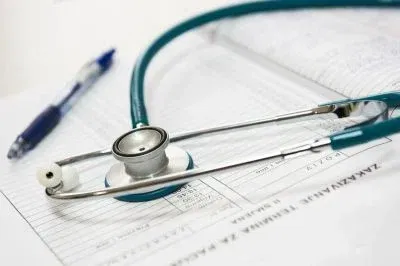
Tachypnea is defined as an elevated respiratory rate, or more simply, breathing that is more rapid than normal. A normal respiratory rate can vary depending on age and activity but is usually between 12 and 20 breaths per minute for a resting adult.1
In contrast, the term hyperpnea refers to rapid deep breathing, while tachypnea refers to rapid, shallow breathing. Let's look at the potential causes of tachypnea, as well as medical conditions in which it may occur.
Symptoms
Tachypnea may be accompanied by the sensation of shortness of breath and an inability to get enough air (dyspnea), blue-tinged fingers and lips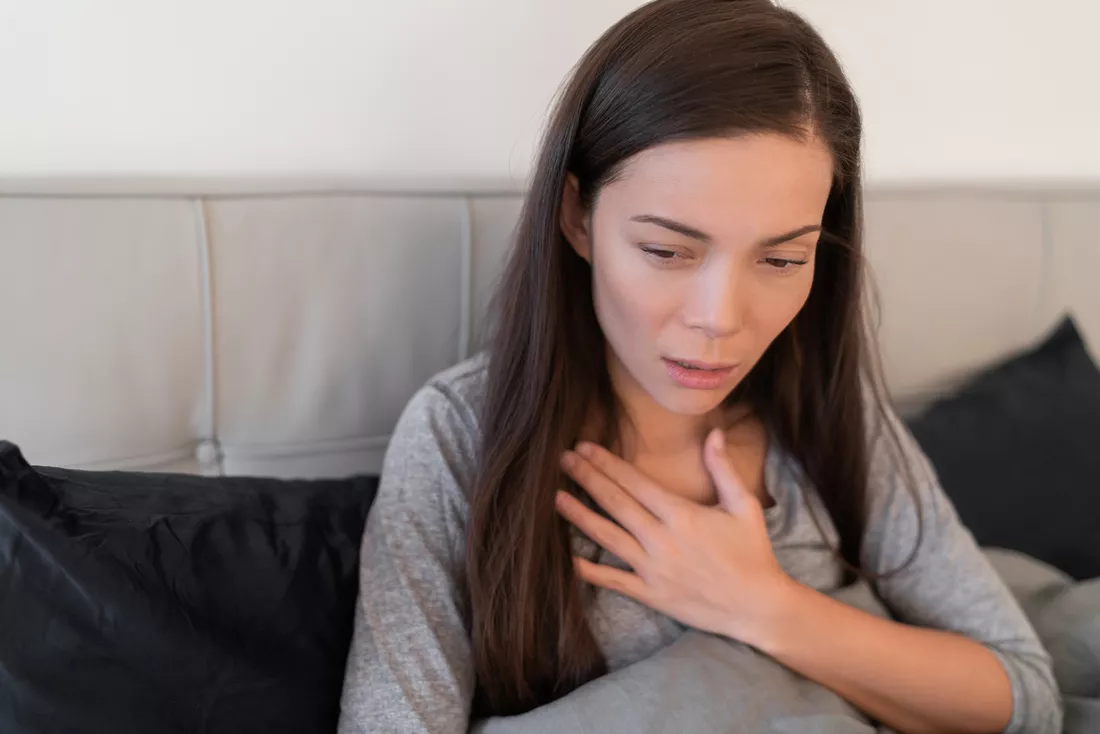 (cyanosis), and sucking in of the chest muscles with breathing (retracting).1Tachypnea may also occur without any obvious symptoms, especially when it is related to conditions such as metabolic imbalances or central nervous system conditions.
(cyanosis), and sucking in of the chest muscles with breathing (retracting).1Tachypnea may also occur without any obvious symptoms, especially when it is related to conditions such as metabolic imbalances or central nervous system conditions.Tachypnea vs. Dyspnea
As noted, tachypnea is a term used to describe a rapid, shallow respiratory rate, but says nothing about what a person is feeling. With tachypnea, a person may be very short of breath, or in contrast, may not notice any difficulty with breathing at all.Causes
There are both physiological causes of tachypnea and pathological causes.Physiological Causes
Physiological causes of a condition refer to the normal response of the body to correct another condition. In this case, the condition, such as tachypnea, is not an abnormal bodily response but is a normal response to another type of abnormal condition or imbalance in the body.Tachypnea can be caused by three primary physiological processes:1
- An imbalance between respiratory gases: A low oxygen level in the blood (hypoxemia) or an increased level of carbon dioxide in the blood (hypercapnia) can cause tachypnea.
- An acid-base imbalance: Tachypnea can be caused by an excess of acid in the body or a decrease in a base in the body (a disruption in the acid-base balance of the body.) When the body senses that the blood is too acidic (metabolic acidosis), it blows off carbon dioxide out of the lung in an attempt to rid the body of acid.
- A fever: With a fever, tachypnea is compensatory, meaning that breathing becomes more rapid to eliminate heat from the body.
Pathological Causes
In contrast to physiological causes, a pathological cause is one that does not occur in an effort to restore the balance in the body, and actually, does the opposite.For example, hyperventilation can cause rapid shallow breathing that is not occurring as an effort to restore balance in the body but instead may be a reaction to anxiety or fear.
Conditions That May Result in Tachypnea
A wide range of medical conditions can result in tachypnea. By categories these may include:2- Lung-related: Lung diseases may lower oxygen levels or raise carbon dioxide levels, and rapid breathing tries to restore these to normal. These include chronic obstructive pulmonary disease (COPD), asthma, pneumonia, pulmonary fibrosis, pneumothorax (collapsed lung), pulmonary embolism, and more.
- Heart-related: Conditions such as heart failure, anemia, or low thyroid can result in cardiovascular changes which in turn cause tachypnea.
- Hyperventilation: This may occur due to pain, anxiety, or other conditions.
- Metabolic acidosis: When the acid level is too high in the blood, breathing rate increases to blow off carbon dioxide. Some causes of this include diabetic ketoacidosis, lactic acidosis, and hepatic encephalopathy.
- Central nervous system-related: Tachypnea may be directly caused by brain abnormalities such as brain tumors.
- Medications: Drugs such as aspirin, stimulants, and marijuana can cause a rapid shallow breathing rate.
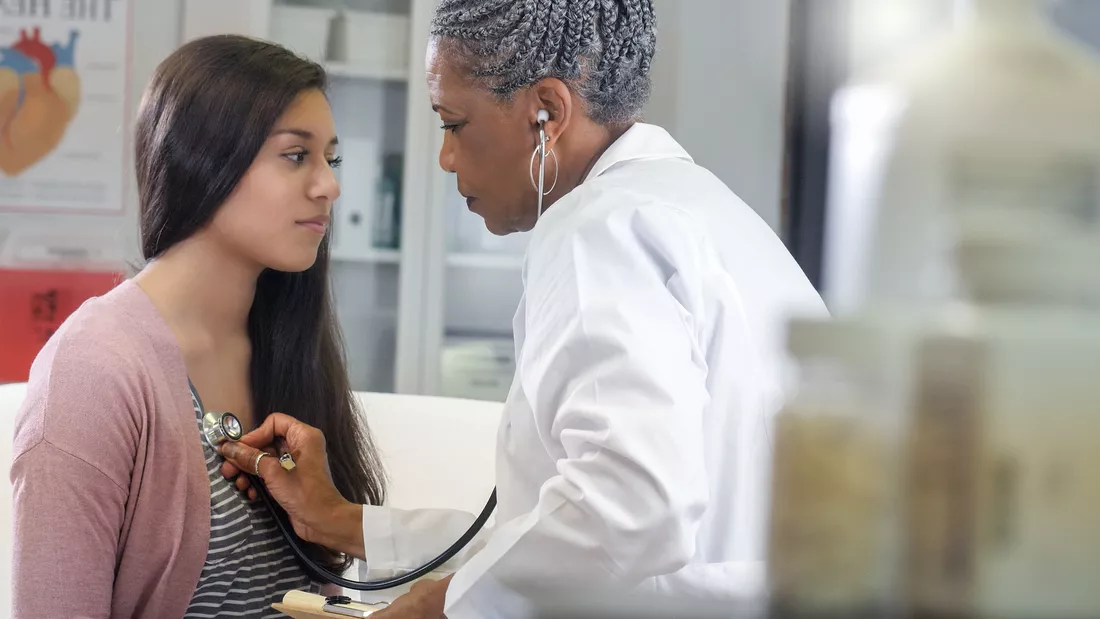
Tachypnea and Lung Cancer
Lung cancer may cause tachypnea in a number of different ways. Damage to the lungs can disrupt the normal exchange of oxygen and carbon dioxide. Scarring to the chest, such as with lung cancer surgery, may result in a decreased ability to take a breath and draw in oxygen.3Chemotherapy-induced anemia can further worsen tachypnea as there are fewer red blood cells to carry oxygen, and hence breathing becomes more rapid in an attempt to correct this.
Diagnosis
The diagnosis of tachypnea will vary depending on a person's age, other medical problems, current medications, and other symptoms, but may include:1- Oximetry: A "clip" may be placed on your finger to estimate the amount of oxygen in your blood.
- Arterial blood gases (ABGs): Blood gases measure oxygen level, carbon dioxide content, and the pH of your blood. The pH can be helpful in evaluating metabolic abnormalities. If the pH is low (acidosis), tests may be done to look for causes such as diabetic ketoacidosis, lactic acidosis, and liver problems.
- Chest X-ray: A chest x-ray can quickly determine some causes of tachypnea, such as a collapsed lung.
- Chest computerized tomography (CT): A chest CT may be done to look for lung diseases or tumors.
- Pulmonary function tests: Pulmonary function tests are very helpful when looking for conditions such as COPD and asthma.
- Glucose: A blood sugar is often done to rule out (or confirm) diabetic ketoacidosis.
- Electrolytes: Sodium and potassium levels are helpful in evaluating some of the causes of tachypnea.
- Hemoglobin: A complete blood count and hemoglobin may be done to look for evidence of anemia as well as infections.
- Electrocardiogram (EKG): An EKG can look for evidence of a heart attack or abnormal heart rhythms.
- VQ scan: A VQ scan is often done if there is a possibility of a pulmonary embolus.
- Brain magnetic resonance imaging (MRI): If no obvious causes of tachypnea are found, a brain MRI may be helpful in ruling out brain abnormalities (such as tumors) as a cause.
- Toxicology screen: There are many drugs, both prescription, over-the-counter, and illegal that can cause tachypnea. A toxicology screen is often done in emergency settings if the cause of tachypnea is unknown.
Treatment
The treatment of tachypnea depends primarily on determining and correcting the underlying causee edit button.
LOW PULSE RATE
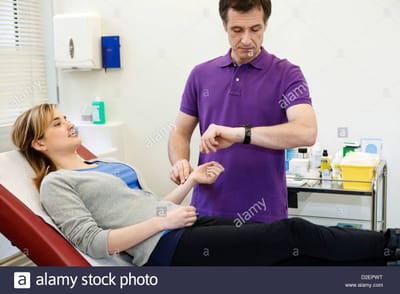
For some people, a slow heart rate does not cause any problems. It can be a sign of being very fit. Healthy young adults and athletes often have heart rates of less than 60 beats a minute.
In other people, bradycardia is a sign of a problem with the heart's electrical system. It means that the heart's natural pacemaker isn't working right or that the electrical pathways of the heart are disrupted. Sometimes, the heart beats so slowly that it doesn't pump enough blood to meet the body's needs. This can cause symptoms, such as feeling dizzy or weak. In some cases, it can be life-threatening.
causes
- Changes in the heart that are the result of aging.
- Diseases that damage the heart's electrical system. These include coronary artery disease, heart attack, and infections such as endocarditis and myocarditis.
- Conditions that can slow electrical impulses through the heart. Examples include having a low thyroid level (hypothyroidism) or an electrolyte imbalance, such as too much potassium in the blood.
- Many types of medicines. Examples include antidepressants, heart medicines, and opioids.
A very slow heart rate may cause you to:
- Feel dizzy or lightheaded.
- Feel short of breath and find it harder to exercise.
- Feel tired.
- Have chest pain or a feeling that your heart is pounding or fluttering (palpitations).
- Feel confused or have trouble concentrating.
- Faint, if a slow heart rate causes a drop in blood pressure.
You can find out how fast your heart is beating by taking your pulse. If your heartbeat is slow or uneven, talk to your doctor.
How is bradycardia diagnosed?
Your doctor may take your pulse to diagnose bradycardia. Your doctor might also do a physical exam, ask questions about your past health, and do an electrocardiogram (EKG or ECG). An EKG measures the electrical signals that control heart rhythm.
Bradycardia often comes and goes, so a standard EKG done in the doctor's office may not find it. An EKG can identify bradycardia only if you are actually having it during the test.
You may need to wear or carry a device called a portable, or ambulatory, electrocardiogram. Examples include a Holter monitor and a cardiac event monitor. You might use it for a day or more. It records your heart rhythm while you go about your daily routine.
You may also have blood tests to find out if another problem is causing your slow heart rate.
TREATMENT
How bradycardia is treated depends on what is causing it. Treatment also depends on the symptoms. If bradycardia doesn't cause symptoms, it may not be treated. You and your doctor can decide what treatment is right for you.
- If damage to the heart's electrical system causes your heart to beat too slowly, you will probably need to have a pacemaker. A pacemaker is an implanted device that helps correct the slow heart rate.
- If another medical problem, such as hypothyroidism or an electrolyte imbalance, is causing a slow heart rate, treating that problem may cure the bradycardia.
- If a medicine is causing your heart to beat too slowly, your doctor may adjust the dose or prescribe a different medicine.
DO AT HOME
Bradycardia is often the result of another heart condition, so taking steps to live a heart-healthy lifestyle will usually improve your overall health. The steps include:
- Having a heart-healthy eating plan that includes vegetables, fruits, nuts, beans, lean meat, fish, and whole grains. Limit alcohol, sodium, and sugar.
- Being active on most, if not all, days of the week. Your doctor can tell you what level of exercise is safe for you.
- Losing weight if you need to, and staying at a healthy weight.
- Not smoking.
- Managing other health problems, such as high blood pressure, high cholesterol, and diabetes.
Pacemakers
Most people who get pacemakers lead normal, active lives. You will need to avoid things that have strong magnetic and electrical fields. These can keep your device from working right. But most electronic equipment and appliances are safe to use.
Your doctor will check your pacemaker regularly. Call your doctor right away if you have symptoms that could mean your device isn't working right, such as:
- Your heartbeat is very fast or slow, skipping, or fluttering.
- You feel dizzy, lightheaded, or like you might faint.
- You have shortness of breath that is new or getting worse.
Heart Rate Problems: Should I Get a Pacemaker?
RAJYASTHAN
You can edit all of this text and replace it with anything you have to say on your blog.
Read MoreThis is a generic blog article you can use for adding blog content / subjects on your website.
Read MoreHIGH PULSE RATE
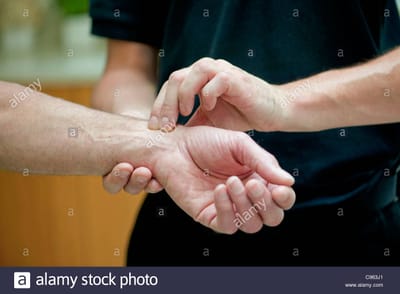
Sometimes, it's normal for you to have a fast heartbeat. For instance, it's normal for your heart rate to rise during exercise or as a response to stress, trauma or illness. But in tachycardia, the heart beats faster than normal due to conditions unrelated to normal physiological stress.
In some cases, tachycardia may cause no symptoms or complications. But if left untreated, tachycardia can disrupt normal heart function and lead to serious complications, including:
- Heart failure
- Stroke
- Sudden cardiac arrest or death
Types of tachycardia
There are many different types of tachycardia. They're grouped according to the part of the heart responsible for the fast heart rate and cause of the abnormally fast heartbeat. Common types of tachycardia include:
- Atrial fibrillation. Atrial fibrillation is a rapid heart rate caused by chaotic, irregular electrical impulses in the upper chambers of the heart (atria). These signals result in rapid, uncoordinated, weak contractions of the atria.
Atrial fibrillation may be temporary, but some episodes won't end unless treated. Atrial fibrillation is the most common type of tachycardia. - Atrial flutter. In atrial flutter, the heart's atria beat very fast but at a regular rate. The fast rate results in weak contractions of the atria. Atrial flutter is caused by irregular circuitry within the atria.
Episodes of atrial flutter may go away themselves or may require treatment. People who have atrial flutter also often have atrial fibrillation at other times. - Supraventricular tachycardia (SVT). Supraventricular tachycardia is an abnormally fast heartbeat that starts somewhere above the lower chambers of the heart (ventricles). It's caused by abnormal circuitry in the heart that is usually present at birth and creates a loop of overlapping signals.
- Ventricular tachycardia. Ventricular tachycardia is a rapid heart rate that starts with abnormal electrical signals in the lower chambers of the heart (ventricles). The rapid heart rate doesn't allow the ventricles to fill and contract efficiently to pump enough blood to the body.
Ventricular tachycardia episodes may be brief and last only a couple of seconds without causing harm. But episodes lasting more than a few seconds can become a life-threatening medical emergency. - Ventricular fibrillation. Ventricular fibrillation occurs when rapid, chaotic electrical impulses cause the lower heart chambers (ventricles) to quiver instead of pumping necessary blood to the body. This can be deadly if the heart isn't restored to a normal rhythm within minutes with an electric shock to the heart (defibrillation).
Ventricular fibrillation may occur during or after a heart attack. Most people who have ventricular fibrillation have an underlying heart disease or have experienced serious trauma, such as being struck by lightning.
When your heart is beating too fast, it may not pump enough blood to the rest of your body. This can starve your organs and tissues of oxygen and can cause the following tachycardia-related signs and symptoms:
- Shortness of breath
- Light headedness
- Rapid pulse rate
- Heart palpitations — a racing, uncomfortable or irregular heartbeat or a sensation of "flopping" in the chest
- Chest pain
- Fainting (syncope)
When to see a doctor
A number of conditions can cause a rapid heart rate and tachycardia symptoms. It's important to get a prompt, accurate diagnosis and appropriate care. See your doctor
If you faint, have difficulty breathing or have chest pain lasting more than a few minutes, get emergency care, or call 911 or your local emergency number. Seek emergency care for anyone experiencing these symptoms.
Causes
Tachycardia is caused by something that disrupts the normal electrical impulses that control the rate of your heart's pumping action. Many things can cause or contribute to a fast heart rate. These include:
- Anaemia
- Drinking too many caffeinated beverages
- Drinking too much alcohol
- Exercise
- Fever
- High or low blood pressure
- Imbalance of electrolytes, mineral-related substances necessary for conducting electrical impulses
- Medication side effects
- Overactive thyroid (hyperthyroidism)
- Smoking
- Sudden stress, such as fright
- Use of stimulant drugs, such as cocaine or methamphetamine
- Anaemia
- Diabetes
- Heart disease
- Heavy alcohol use
- Heavy caffeine use
- High blood pressure
- Overactive or underactive thyroid
- Psychological stress or anxiety
- Sleep apnea
- Smoking
- Use of stimulant drugs
Complications
Complications of tachycardia depend on the type of tachycardia, how fast the heart is beating, how long the rapid heart rate lasts and if you have any other heart conditions.
Possible complications include:
- Blood clots that can cause a stroke or heart attack
- Inability of the heart to pump enough blood (heart failure)
- Frequent fainting spells or unconsciousness
- Sudden death, usually only associated with ventricular tachycardia or ventricular fibrillation
The most effective way to prevent tachycardia is to maintain a healthy heart and reduce your risk of developing heart disease. If you already have heart disease, monitor it and follow your treatment plan to help prevent tachycardia.
Prevent heart disease
Take the following steps:
- Exercise and eat a healthy diet. Live a heart-healthy lifestyle by exercising regularly and eating a healthy, low-fat diet that's rich in fruits, vegetables and whole grains.
- Maintain a healthy weight. Being overweight increases your risk of developing heart disease.
- Keep blood pressure and cholesterol levels under control. Make lifestyle changes and take medications as prescribed to correct high blood pressure (hypertension) or high cholesterol.
- Stop smoking. If you smoke and can't quit on your own, talk to your doctor about strategies or programs to help you break a smoking habit.
- Drink in moderation. If you choose to drink alcohol, do so in moderation. If you choose to drink alcohol, do so in moderation. For healthy adults, that means up to one drink a day for women and up to two drinks a day for men. For some conditions, it's recommended that you completely avoid alcohol. Ask your doctor for advice specific to your condition.
- Don't use recreational drugs. Don't use stimulants, such as cocaine. Talk to your doctor about an appropriate program for you if you need help ending recreational drug use.
- Use over-the-counter medications with caution. Some cold and cough medications contain stimulants that may trigger a rapid heartbeat. Ask your doctor which medications you need to avoid.
- Limit caffeine. If you drink caffeinated beverages, do so in moderation (no more than one to two beverages daily).
- Control stress. Avoid unnecessary stress and learn coping techniques to handle normal stress in a healthy way.
- Go to scheduled check ups. Have regular physical exams and report any signs or symptoms to your doctor.
Features
Statistics
This page is used for listing the features offered by your company/service.
Reports
You can add any feature you want or edit the ones that are already listed.
Mobile
You can edit all of this text and replace it with what you want to write.
Media
Edit your Features from the Pages tab by clicking the edit button.
Social
Edit your Features from the Pages tab by clicking the edit button.
TABLETS-G
Glimp-MP 1 Tablet SR is a medicine that helps to control high blood glucose (sugar) levels. It helps get rid of extra glucose from your body through urine. It also improves the body’s response to the hormone insulin, which is responsible for regulating blood glucose (sugar) levels in our body.
Read MoreTABLETS D
SALT COMPOSITION Chlorzoxazone (250mg) + Diclofenac (50mg) + Paracetamol (325mg)
Read More






